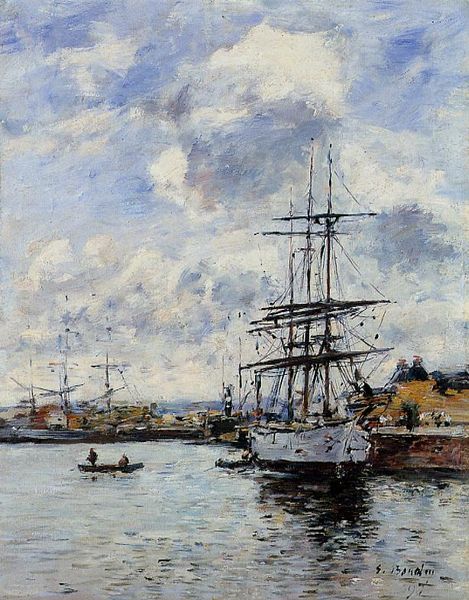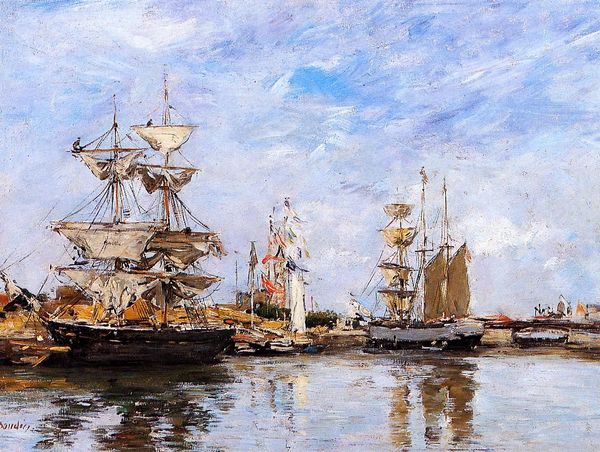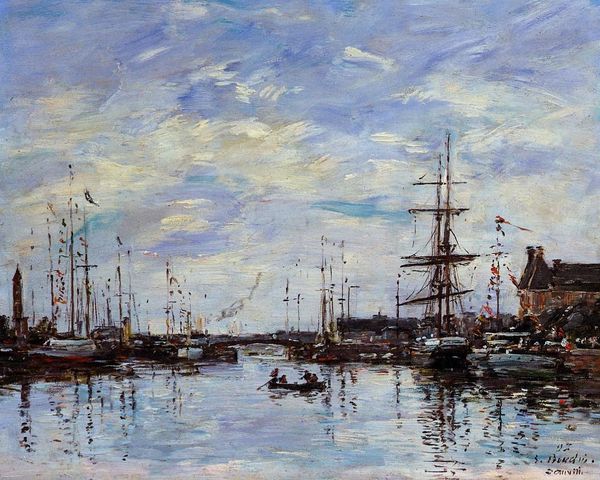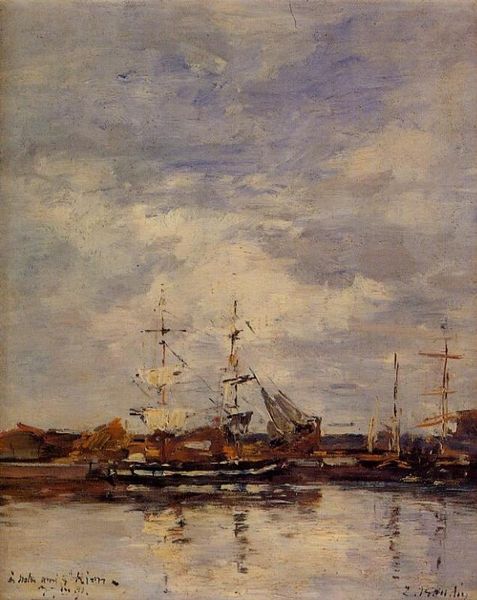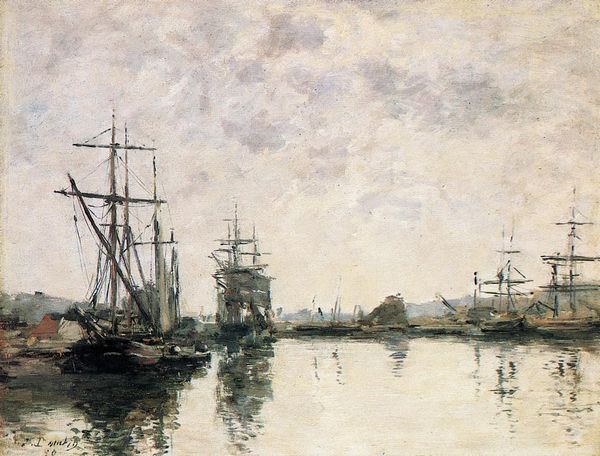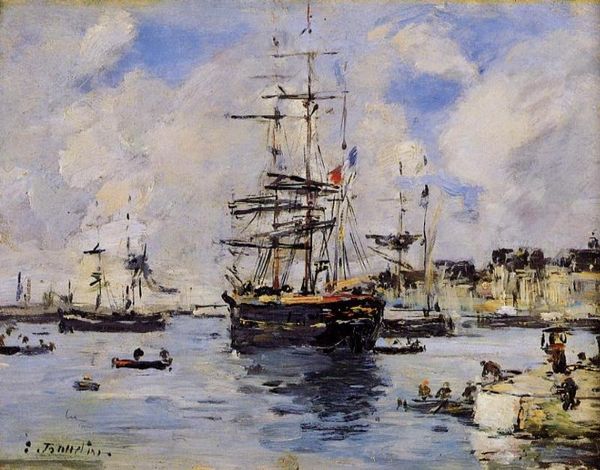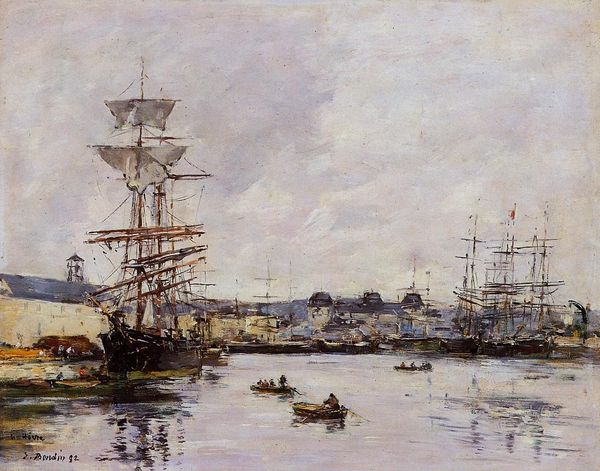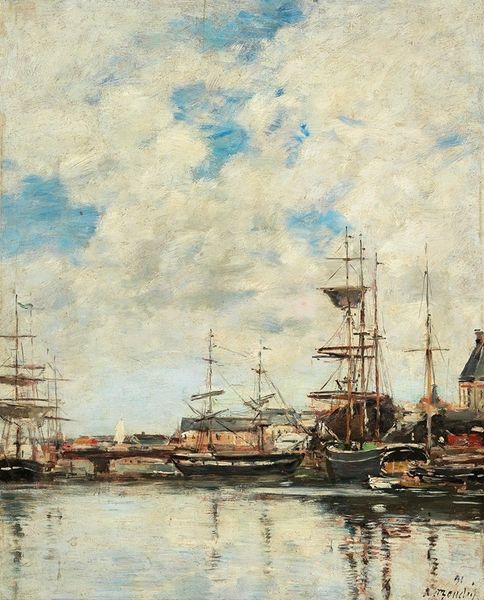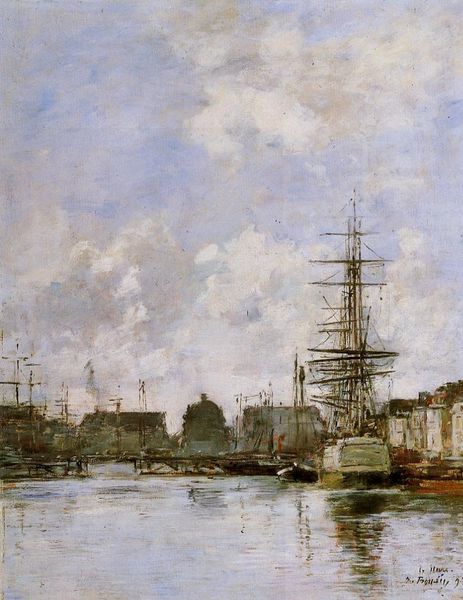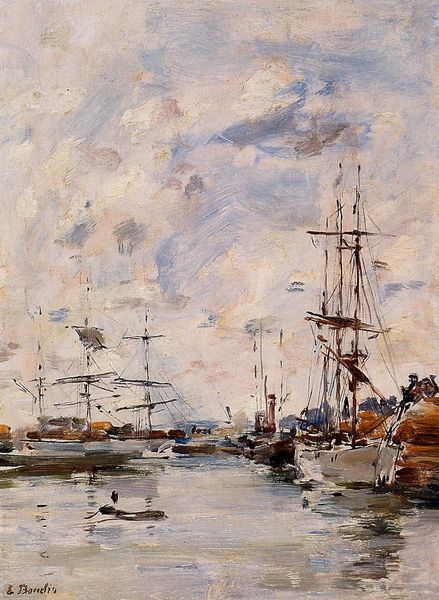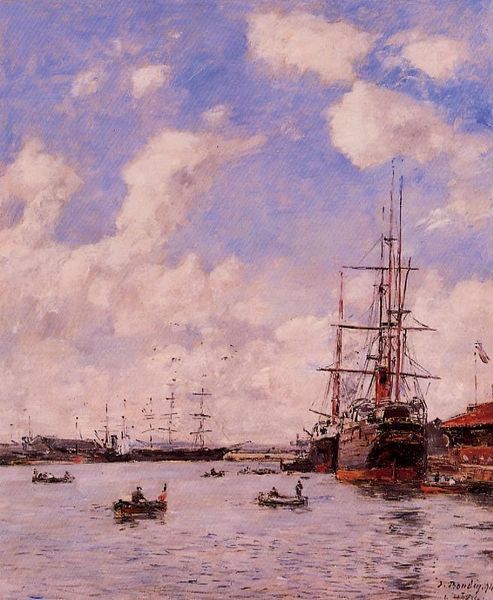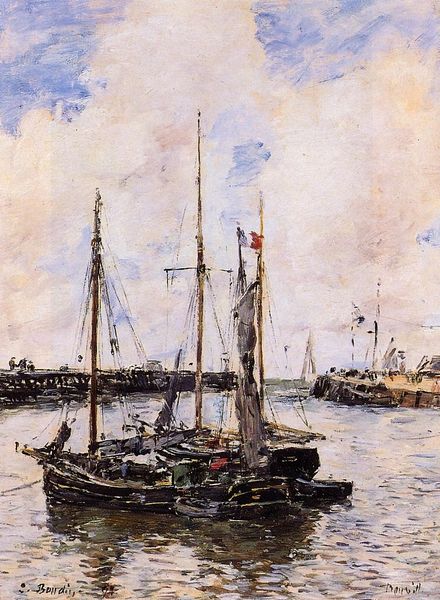
painting, plein-air, oil-paint
#
boat
#
ship
#
painting
#
impressionism
#
plein-air
#
oil-paint
#
vehicle
#
landscape
#
impressionist landscape
#
oil painting
#
france
#
water
#
painting painterly
#
line
#
cityscape
#
genre-painting
Copyright: Public domain
Curator: Eugène Boudin’s oil painting, “Deauville, the Harbor,” created in 1881, offers us a glimpse into a bustling port town. What strikes you immediately about this particular composition? Editor: There is something almost mournful about the piece, a stillness despite the implied activity. The muted palette certainly contributes, the grays and blues almost blending sea and sky. It is calming, yet somehow melancholic. Curator: Indeed. Boudin, a precursor to Impressionism, often depicted harbor scenes, capturing the fleeting effects of light and atmosphere. We observe a keen awareness of tonal relationships—note how the cool grays of the sky subtly shift into the reflections on the water's surface. The painterly brushstrokes create an atmospheric depth. Editor: The composition leads my eye towards the left first. But how do we interpret the lack of distinctiveness? It appears less about representing Deauville and more about portraying a generic harbor. Is this merely a study in form and color or could there be a larger social statement on standardization and placelessness creeping into these bustling trade cities? Curator: An intriguing proposition! Considering the broader context of the period—the rise of industrialization and the increasing interconnectedness of European cities through trade—your point highlights the socio-economic shifts and perhaps their visual manifestations, with generic elements taking over local aesthetics, which affected how individuals related to the world. But observe how Boudin uses light to dissolve outlines, imbuing a sense of immediacy and capturing a specific moment in time. Is that perhaps a rejection of academic formalism? Editor: Perhaps. Boudin's handling of light does create an undeniable sense of atmospheric truth. It reminds us how Impressionism reflected a broader shift in perception, capturing not just what is seen but how it is experienced, marking the transition to modernity. This painting makes me reconsider Boudin's placement as a link from Realism to the Post-Impressionist painters, such as the works by Georges Seurat, Paul Signac, and Maximilien Luce, among others. Curator: A truly insightful reading. Looking beyond its surface simplicity and exploring the convergence of formal, aesthetic, and socio-historical dimensions undoubtedly enriches our understanding. Editor: Yes, by carefully unpacking those layers, this painting evolves into much more than just ships in a harbor. It’s a nuanced portrayal of transition.
Comments
No comments
Be the first to comment and join the conversation on the ultimate creative platform.
